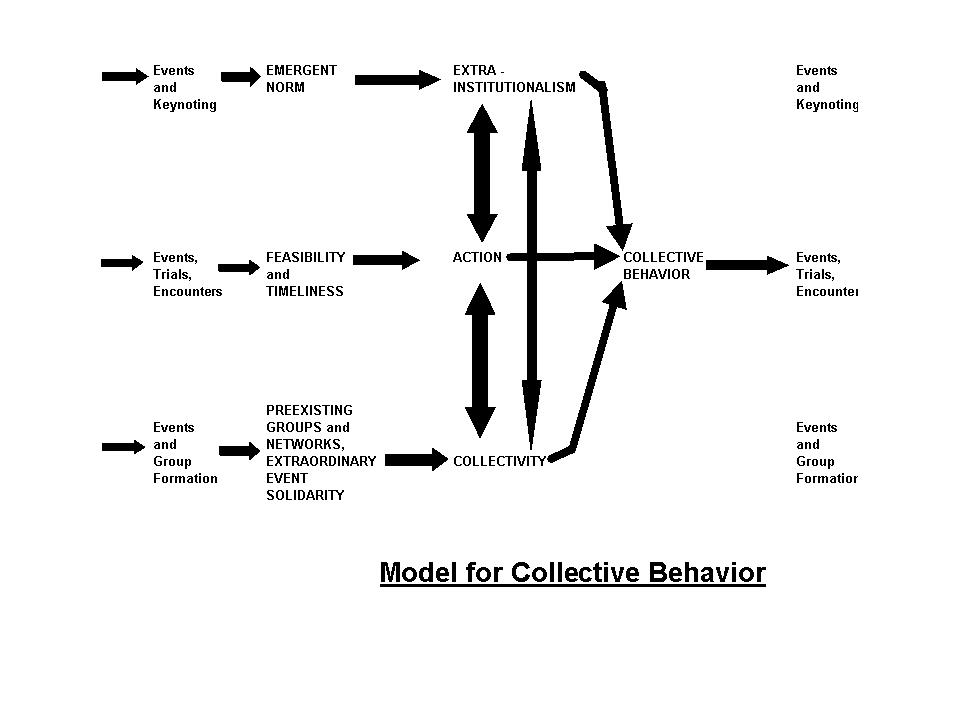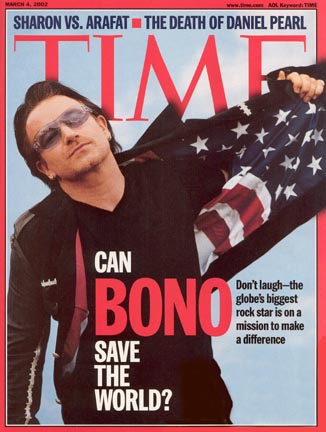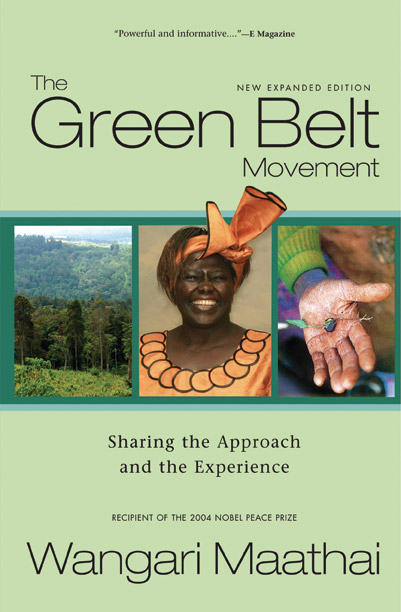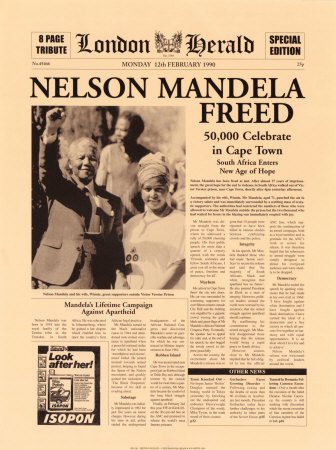Internal
Links
Top
|
|
Outline on Collective
Behavior
|
|
External
Links
|
| |
- Video: History Channel
on the Civil Rights Mvmt: Crossing the Bridge
44 minutes |
Link
|
| |
- Video: Woodstock
12:08, 8:57, 7:43 |
Link
|
| |
- Project: Woodstock: The
Emergence of Youth Culture & Personal Freedom |
Link
|
| |
- Video: Jena 6.
Sept. 20, 2007
10:39 |
Link
|
| |
- Video: GM UAW Strike.
Sept. 24, 2007
13:42 |
Link
|
| |
- Video: Protests in Myanmar.
Sept. 24, 2007
2:00 & 12:40 |
Link
|
| |
- Project: Myanmar: Social
Change as Nation Building |
Link
|
| |
- Video: Waco: The
Rules of Engagement. April 19, 1993
22:00 |
Link
|
|
|
- Project: Collective Behavior |
Link
|
| |
INTRODUCTION
Our task will be
1. Explain how people come to transcend, bypass, or subvert established
institutional patterns & structures
2. Explain CB w/ respect to attitudes: does CB form attitudes
or vice versa?
3. Explain the "collective" in CB |
|
|
|
Collective Behavior is one type of Social Change |
|
|
|
For Locher, collective behavior is any event during which a
group of people engage in unusual behavior, i.e., a "group" form of deviance |
|
|
|
Review: Human Formations: group vs. an aggregate |
|
|
|
For Farley, collective behavior is large numbers of people acting
together in an extraordinary situation, in which the usual norms governing
behavior do not apply |
|
|
|
For Macionis, collective behavior is action, thoughts, &
emotions that involve large numbers of people & that do not conform
to established social norms |
|
|
|
For Smelser, collective behavior is the relatively spontaneous
& unstructured behavior of a group of people who are reacting to a
common influence in an ambiguous situation |
|
| |
For Turner & Killian, collective behavior is those forms
of social behavior in which usual conventions cease to guide social action
& people collectively transcend, bypass, or subvert established institutional
patterns & structures |
|
| |
Collective behavior is large numbers of people acting together,
i.e. a collectivity, but not necessarily in same locale, w/ similar thoughts
& emotions & not conforming to established social norms to achieve
relatively common objectives, which may be action oriented, or thought
or emotion oriented |
|
| |
Collective behavior is a term in sociology that refers to how
people act in crowds & other large, relatively unorganized groups |
|
| |
The various types of collective behavior include fads, panics, &
riots. Collective behavior often arises in situations that stimulate
people's emotions |
|
| |
Situations which may lead to collective behavior include sporting events,
protest demonstrations, & disasters such as floods & fires |
|
| |
For a social action to be labeled as collective behavior it must be
a social processes or event which do not reflect existing social structure
(laws, conventions, & institutions), but which emerge in a "spontaneous"
way which is to say, standard sociological, psychological, political, etc.
explanations are inadequate |
|
|
|
COLLECTIVE BEHAVIOR EXAMPLES: |
|
|
|
THE CRUSADES
1096 Pope Urban II
Everybody wanted to go... to where they didn't really know.
Land values dropped
Only cowards remained. |
|
|
|
During the Selma March,
- many followed ML King into the streets & jails
- the goals were not as simple & noble as the leaders represented
them to be
- the leaders were both devout men of God seeking to overcome evil
as well as social mvmt pragmatists
- only a few were cynical power mongers who were successfully marginalized
by the primary leaders
- the civil rights mvmt accomplished a social revolution & altered
history |
|
|
|
A bizarre form of collective behavior, St. Vitus’ Waltz, aka the Dancing
Disease, was caused by viral encephalitis which caused brain fever,
affecting balance & emotion, giving people the feeling of being in
love |
|
| |
Some examples of collective behavior are a religious revival, a panic
in a burning theater, an outbreak of peace symbol painting, a change in
popular preferences in fashion, any revolution, a sudden widespread interest
in body piercing, etc. |
|
| |
ROBERT E. PARK |
|
|
|
Robert E. Park is credited as the founder of the field of collective
behavior & is credited w/ the first use of the term |
|
| |
Park believed movements such as the Crusades, the Civil Right Mvmt,
etc. played a central role in social change, i.e., history |
|
| |
Much collective behavior is impulsive, unplanned, & brief
& thus, it differs from the more predictable, longer lasting actions
of such organized groups as school classes, teams, & social clubs |
|
| |
Some types of collective behavior fit into organized social frameworks
such as an organized political party or soc mvmt which use mass demonstrations
as a device in seeking social change |
|
| |
Before the 1900's, scientists knew little about the forces at work
in collective behavior, but during the 1890's, Gustave Le Bon, a French
physician & social scientist, made one of the first psychological studies
of crowds |
|
| |
The American sociologists Robert E. Park & Ernest W. Burgess introduced
the term collective behavior in their book, Introduction to the Science
of Sociology (1921) |
|
| |
EARLY VIEWS ON COLLECTIVE BEHAVIOR |
|
|
|
Collective behavior was originally called "mob behavior" or
"mass hysteria" because it was once believed that people lost their
ability to reason |
|
|
|
Most collective behavior is non-violent, though originally it was often
mislabeled, assumed to be, violent |
|
| |
LeBon, a frightened aristocrat, interpreted the crowds of the
Fr Rev as irrational reversions to animal emotion, & infers from this
that such reversion is characteristic of crowds in general |
|
| |
Freud expressed a similar view of the maddening crowd in his
Group
Psychology & the Analysis of the Ego (1922), but modern CB addresses
other types of crowd behavior |
|
| |
COLLECTIVE BEHAVIOR IS NON ROUTINE |
|
|
|
Collective behavior today is still defined as being deviant, unusual,
etc. but it often evolves into acceptable behavior |
|
| |
Collective behavior often becomes "routinized" & it may
even become "institutionalized" |
|
|
|
Once collective behavior becomes routine, it ceases to be collective
behavior |
|
|
|
Collective behavior must always be considered in the context of social
norms,
including folkways, mores, rules, laws |
|
| |
As the character of the more amorphous ( changing, unformed
) norms change, so does the character of collective behavior |
|
| |
The "deviance" of collective behavior must not be a value judgment
of "bad, evil, etc." since deviance only denotes behavior that is
outside of accepted social norms |
|
| |
Even a majority of people can be deviant, in that deviance is
not defined by majority rule, but by power |
|
| |
See Also: Deviance |
|
| |
THE CATEGORIZATION OF COLLECTIVE BEHAVIOR |
|
| |
Early on in CB theory, i.e. in the 1800s, theorists noted the existence
of crowd behavior that exhibited significantly different qualities
from other forms of behavior known to social scientists. |
|
| |
Gustave LeBon, a frightened aristocrat, interpreted the crowds of the
French Revolution as irrational reversions to animal emotion |
|
| |
In the 1900s, at the U of Chicago, Robert Park & Herbert Blumer
saw crowds as emotional, but as capable of any emotion, not only
the negative ones of anger & fear |
|
| |
Social scientists now recognize that there are both compact &
diffuse crowds |
|
| |
Compact crowds are those whose participants are assembled in
one place while diffuse crowds are those in in which the participants
are not assembled in one place |
|
| |
Turner & Killian's examples of diffuse crowds include stock market
booms, panics about sexual perils, "Red scares" & more |
|
| |
Some psychologists have suggested that there are three fundamental
human emotions, fear, joy, & anger |
|
| |
Smelser & others have proposed three corresponding forms of the
crowd, including the panic, the craze & the hostile outburst, which
today is usually called a riot |
|
| |
In the panic, fear is the dominant emotion; in the craze,
joy is the dominant emotion; in the riot, anger is the dominant
emotion |
|
| |
Park develop the categories of the public & the mass to distinguish
btwn diffuse crowds concerned w/ issues or events from diffuse crowds concerned
w/ mass media issues or events |
|
| |
For Park, the public expresses a common emotion or response to various
issues as a result of exposure to conversation, & thus every issue
has a public |
|
| |
For Park, the masses, or a mass, expresses a common emotion or response
not as a result of conversation, but as a result of exposure to a mass
media event whether it might be a TV report or just the diffuse knowledge
that a widespread action is occurring |
|
| |
Blumer recognized the final major form of CB in the soc mvmts which
are typically distinguished from a crowd, a public or a mass by the fact
that they typically have a structure & persistence |
|
|
|
Because the field of CB is relatively, new the broad categories of
crowds, publics, masses, & social mvmts are frequently re-categorized
into other theoretical frameworks in order to highlight various qualities
or theories of action |
|
|
|
There are EIGHT basic types of collective behavior examined by social
scientists today, including:
1. Crowd Behavior
a. Mass Suicides
b. Mob Violence
c. Riots
2. Non Consumer Fashions & Fads
3. Consumer Collective Behavior
a. Fashions
b. Fads
c. Crazes
d. Panics
4. Rumors
5. Public Opinion
6. Mass Hysteria
a. Physical
b. Sightings & Miracles
7. Terrorism
8. Soc Mvmts |
|
|
|
Collective behavior occurs in so many forms that social scientists
have reached few conclusions about its origins, development, & consequences |
|
|
|
Some investigators believe the pace of modern life & the
growth of mass communications have increased the amount of collective behavior |
|
| |
COLLECTIVE BEHAVIOR, ORGANIZATIONAL BEHAVIOR & INSTITUTIONAL
BEHAVIOR |
|
| |
While collective, orgl, & institutional behaviors have some common
characteristics, & often overlap in practice, they are often distinct
fields of inquiry |
|
|
|
Routine or institutionalized social behavior, including that
carried out by any of the 10 social institutions (family, religion, politics,
etc.), such as war, econ activity, family activity, media activity, political
activity etc. is not collective behavior |
|
| |
Many types of behavior are so common as to be regularized or institutionalized
by society |
|
| |
Park was one of the first social scientists to expand the realm of
collective behavior beyond that of the crowd, recognizing the public itself
as an important agent of social change |
|
| |
For Park, many social changes begin w/ slow, cumulative shifts in public
opinion, which end the old social patterns, & begin the new social
patterns |
|
| |
Herbert Blumer was Park's student, & he expanded the actors of
collective behavior beyond the crowd to include the collectivities of soc
mvmts & the public |
|
| |
For Blumer the FOUR actors or collectivities of collective behavior
include
1. the crowd
2. the mass
3. soc mvmts
4. the public |
|
| |
Orgl beh is not considered to be collective behavior & generally
includes groups that are governed by established rules or procedures which
have the force of tradition behind them |
|
| |
In contrast to collectivities, org behavior often is governed by rules
or laws such as Robert's Rule of Order or the rules of a bureaucracy |
|
| |
Collectivities are not guided in a straightforward fashion by the culture,
norms, ideology, etc. of the society |
|
| |
Collectivities are informal in that they lack defined meanings, goals,
procedures |
|
| |
Institutional behavior is not considered to be collective behavior
but generally is less organized than org behavior |
|
| |
Institutional Behavior
Family
Play
Religion
School
Work |
|
| |
Institutional behavior is guided by the culture of the larger society |
|
| |
CONTINUITY IN BEHAVIOR FOR CHANGE & SOCIAL CHANGE |
|
| |
There is a continuum of behavior that ranges from individual behavior,
to small group behavior, collective behavior, orgl beh, institutional behavior,
etc. |
|
| |
Weller & Quarantelli propose a typology that ranges from "normal"
or routine behavior to new behavior or social change |
|
| |
1. Normal behavior generally occurs in orgs or institutions
by well established social actors who follow well established norms |
|
| |
2. Non routine normal behavior occurs when normal social
relations endure but norms emerge as occurs w/ hospital staff in a disaster
where old actors establish relatively new norms |
|
| |
3. Emergent, routine social behavior occurs when a new collectivity
emerges & follows conventional norms |
|
| |
An example of emergent, routine social behavior w/ a new collectivity
can be seen in the historically recent rise of sports fans who are following
the old norms of watching sports, but are emergent in the sense that they
are a mass mvmt which is generating new attention & a new relationship
w/ other institutions & actors |
|
| |
4. Social change or new behavior occurs when there are
emergent norms, actors & social relationships as when a new collectivity
acts in new, unique ways establishing new norms in the process |
|
| |
An example of emergent norms, actors, & social relationships can
be seen in the Crusades or the civil rights mvmt |
|
| |
For Blumer, social change is normal, as normal as the established social
order in the sense that it is always occurring, but it is not normal in
the sense that it occurs outside of the norms of society |
|
| |
Social change is abnormal, in that it challenges, confronts
or in some manner causes disruption in the established social order |
|
| |
For Blumer a soc mvmt: "... takes on the character of
a society," developing a culture, a soc org, a new scheme of life |
|
| |
For Blumer a soc mvmts were not necessarily under the influence of
custom, tradition, conventions, rules or institutional regulations |
|
| |
For Blumer the examination of collective behavior is concerned w/ the
way in which the social order comes into existence |
|
| |
Collective behavior is "extra institutional" in that it is outside
of everyday social behavior which always takes place in one of the ten
social institutions |
|
| |
At first CB was considered the opposite of institutional behavior
(IB) |
|
| |
IB may be defined as people governed by norms, folkways, mores, &
laws |
|
| |
RATIONAL & NON RATIONAL MOTIVATIONS IN CB |
|
| |
As the study of CB developed, social scientists came to understand
that people cast aside norms & acted on emotion or suggestibility or
unsocialized impulses as opposed to the standard norms of IB |
|
| |
Early in the study of CB, some social scientists stressed rational
calculation |
|
| |
Early in the study of CB, some social scientists proposed that CB took
place under the governance of emergent norms |
|
| |
Today, some social scientists propose that CB occurs because individuals
find solidarity of voice for an amorphous norm, & develop a
shared definition of right & wrong |
|
| |
People riot, etc. because they find a new definition of right &
wrong |
|
| |
Emergent norms may include the redefinition of right & wrong
as seen when the public became convinced that segregation was wrong |
|
| |
Perhaps the simplest case of CB is permissiveness, where actors
see wrong behavior as permissible under the circumstances |
|
| |
Only in the case of looting do people come to accept the logic that
they are taking what is rightfully theirs, & yet opportunities to steal
always exist |
|
| |
Under normal, non looting conditions the opportunity to steal exists,
but norms are not redefined to make it acceptable |
|
| |
Passengers on the Titanic defined panic as unacceptable & defined
a sense of necessity of heroic behavior |
|
|
|
More complex CB requires emergent norms that are permissible &
obligatory as in the case of war, the environment, etc |
|
|
|
People come to act collectively when the conditions or event
are sufficiently outside the range of ordinary happenings so that people
turn to others for help & support in interpreting & responding |
|
|
|
People come to act collectively when there is a ready availability
of pre-existing social groups that act collectively outside of the
norm |
|
|
|
People come to act collectively because people tend to form ad hoc
groups on basis of some recognizable informal, or minimal grouping |
|
|
|
CB is distinctive from other types of soc beh because it requires more
complex
decision making & communications than individual behavior because
of the necessity of a complex division of labor & coordination of labor |
|
|
|
CB is distinctive from other types of social behavior because the use
of pre-existing communication networks such as in the community,
or the mass media is essential |
|
|
|
CB is distinctive from other types of social behavior because problems
of communication & coordination, etc. are much greater for sustained
than for transitory action |
|
| |
EXPLANATIONS OF COLLECTIVE BEHAVIOR |
|
| |
1. Contagion theory focuses on special psychological
mechanisms including moods, attitudes, communications |
|
| |
2. The emergent norm perspective focuses on emergent
definition of the situation, how actors create meaning & rules |
|
| |
3. Value added theory integrates functional
theory into an analysis of collective behavior & assumes that col
beh is functional / useful for society |
|
| |
4. The assembly sociocybernetic symbolic interactionist /
behaviorist (AS-SIB) holds that behavior converges because of the common
meaningful interpretations or instructions created by participants &
other |
|
| |
5. Individualist theories assume that collective
behavior comes from w/in the individual & sees individual motivations
as the key to understanding why collective behavior occurs |
|
| |
6. Convergence theory focuses on characteristics
& predispositions which individuals bring to the situation |
|
|
Link
|
Figure on a Model of Collective
Behavior by Turner & Killian |
|
| |
A Model of Collective Behavior demonstrates that precipitating incidents
justify the emergence of a norm which justifies extra institutional action,
i.e., outside of the normal channels & that a precipitating incidents
justify or stimulate the interaction of pre-existing groups or ad hoc formations
give pre-existing conditions of feasibility & timeliness |
|
|




